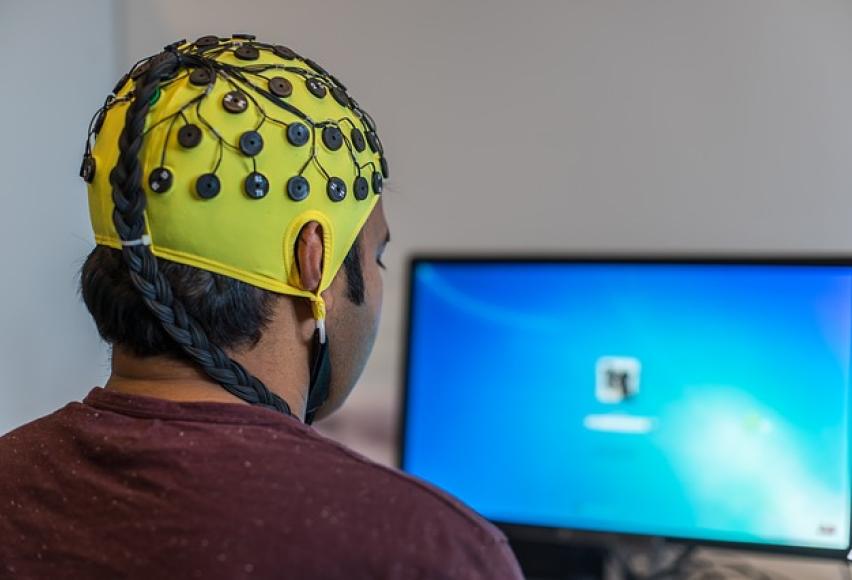Biofeedback for BFRBs

Online test
Find out the severity of your symptoms with this free online test
In the continuing quest for effective treatments for OCD and BFRB’s, a recent systematic review looked at ten studies that used biofeedback for a treatment intervention to determine if it is a viable treatment option.
Biofeedback is a process of learning how to control physiology to help people manage biosignal triggers of disorders. Biosignals include heart rate, body temperature, respiratory patterns, skin conductance, and muscle activity. Essentially, a person learns to self-regulate these processes first by recognizing physiological sensations and changes followed by learning techniques to manage them.
Try This at Home
Try this simple exercise: Use a heart rate monitor, either via fitness device, watch, or another method. Not your resting heart rate. Then, get worked up physically by running in place really fast, doing jumping jacks, or whatever else works for you. Note your increased heart rate. Stop the activity and note how long it takes for your heart rate to go back to its resting rate. Now, work yourself up again. Instead of waiting for your heart rate to go down naturally, you’re going to take control of your breathing by taking a deep breath in, holding for 2-4 seconds, exhaling slowly, holding for 2-4 seconds and continue that cycle while watching your heart rate. What happens? By taking control of your breathing, you were able to slow your heart rate purposefully. This works for anxiety and panic attacks as well. Next time you feel anxious, in pain, or like you’re experiencing a panic attack, check your heart rate. Then, take control of your breathing and check your heart rate again. See if you can settle it yourself.
That example is a simple form of biofeedback, and clinical biofeedback training often includes the use of surface electromyography (sEMG) to measure other aspects of physiology. This technique is used for a variety of conditions including headaches, chronic pain, ADHD, and epilepsy. Another form of the treatment in neurofeedback which uses EEG to measure brain activity during biofeedback.
The Research
Disorders such as OCD, body dysmorphic disorder, hoarding disorder, compulsive hair pulling or skin picking, can result from impaired behavioral inhibition in the neural pathways. Further, some people with BFRBs experience them as closer to tic disorders than compulsive disorders like OCD. In those cases, the triggers for behaviors are more like motor tics than maladaptive thoughts. For example, people who pick automatically usually do so without conscious awareness, so working back for an appropriate treatment brings up difficulties identifying thoughts or beliefs that lead to behavior because the person is not aware they are picking. Depending on the type of skin picking behaviors, some treatments that use a physiological method before a cognitive method produce more effective results.
There is research about the effectiveness of biofeedback and neurofeedback as treatments for these disorders. However, a recent systematic review looked at all of them to determine if the studies agreed or not. Individual studies on treatment effectiveness often do not include enough participants to make generalizations, so systematic reviews will occasionally look at several studies that meet general criteria to see the bigger picture.
The systematic review looked at ten studies that used biofeedback or neurofeedback with participants who had OCD. Results indicate that neurofeedback yielded good results, but the authors did not think the studies were constructed in a way that could give good results. In other words, the authors claimed those studies were not good studies, so the results don’t say much. The authors continued to criticize the other studies based on poor methodology or small samples ultimately concluding that biofeedback and neurofeedback are not very promising.
How to Interpret Results
Research, when summarized with systematic reviews, can provide excellent information about a body research conducted on a topic. However, the requirements for conducting a systematic review are strict which ends up leaving out a lot of information. A lot of good studies get left out because they don’t match and those that get in may not represent all populations. What research like this is good for, then, is ideas for further research. Research yields the kind of information needed to understand disorders and to develop treatments, so the more research that occurs, the better. Not to mention, when systematic reviews point out flaws in previous studies, the next round of studies can use that information to improve methodology.
The other thing to consider is that with techniques like biofeedback and neurofeedback, although not widely used, can give us tools to add to the treatment toolbox. For example, you may not have the ability to go to a clinic with equipment and training, but you can do exercises like the one in this article to see what effect it has on you. You know you best, you know your triggers best, and perhaps the information in this article gives you something to think about regarding your experience. What physiological signals do you notice when you feel the urge to pick? What happens after? What sensations do you notice as your stress levels change and how does your body feel when you go a long time without picking? Information, no matter how small, is good when you’re looking for ways to improve your life.
Online test
Find out the severity of your symptoms with this free online test
Start your journey with SkinPick
Take control of your life and find freedom from skin picking through professional therapy and evidence-based behavioral techniques.
Start Now



